
ASX Iron ore stocks: Top 10 to consider in 2025
Iron ore is one of Australia's most important exports and investors can choose from a variety of ASX iron ore stocks.
Who is the biggest iron ore company in Australia?
Australia has several of the world's biggest iron ore producers and is the top country by total exports. The bulk of the iron ore industry is based in Western Australia, particularly around the Pilbara region in the state's northwest. These mining companies have built up extensive infrastructure over the years and are in an advantageous location to efficiently export large volumes of iron ore to Asia's coastal steel mills. China is currently the biggest iron ore importer in the world.
Rio Tinto, BHP Group and Fortescue Ltd are the largest producers after Brazil's Vale. Rio Tinto was the top iron ore miner with 328m tonnes in 2024. BHP produced 261m tonnes and Fortescue mined 228m tonnes over the same period.
Explore the top iron ore companies from the ASX
Company Name | Ticker | Share Price | YTD | Market Capitalisation |
|---|---|---|---|---|
BHP Group | $39.32 | -0.58% | $199.51b | |
Rio Tinto Limited | $119.10 | +1.40% | $167.62b | |
Fortescue Ltd | $16.30 | -10.68% | $50.19b | |
Mineral Resources Limited | $24.33 | -28.96% | $4.78b | |
Champion Iron | $5.28 | -8.17% | $2.74b | |
Deterra Royalties | $3.61 | -2.96% | $1.91b | |
Mount Gibson Iron | $0.32 | +6.67% | $378.76m | |
Grange Resources | $0.21 | -4.55% | $243.04m | |
Fenix Resources | $0.29 | +7.41% | $211.23m | |
Magnetite Mines | $0.12 | -0.00% | $13.39m |
Data as of 24 March 2025. Source: Stake, Google.
*The list of iron ore stocks mentioned is ranked by market capitalisation. When deciding what companies to feature, we analyse the company's financials, recent news, advancement in their timeline, and whether or not they are actively traded on Stake.
Here are the top iron ore stocks
1. BHP Group Limited ($BHP)
Founded in 1885 as the Broken Hill Proprietary Company, BHP is the world’s largest mining company. It is one of the world's top producers of iron ore and copper. It developed its iron ore business in the 1960s.
BHP’s Western Australia Iron Ore business operates four processing hubs and five mining hubs that are connected by over 1,000 km of rail infrastructure and port facilities in the Pilbara. It includes some of Australia's largest iron ore mines like Yandi, Jimblebar and the Newman operations. BHP is targeting FY25 production of 255m-265.5m tonnes. It plans to increase production from WAIO to 305m tonnes a year over the medium term.
🆚 Compare BHP vs FMG→
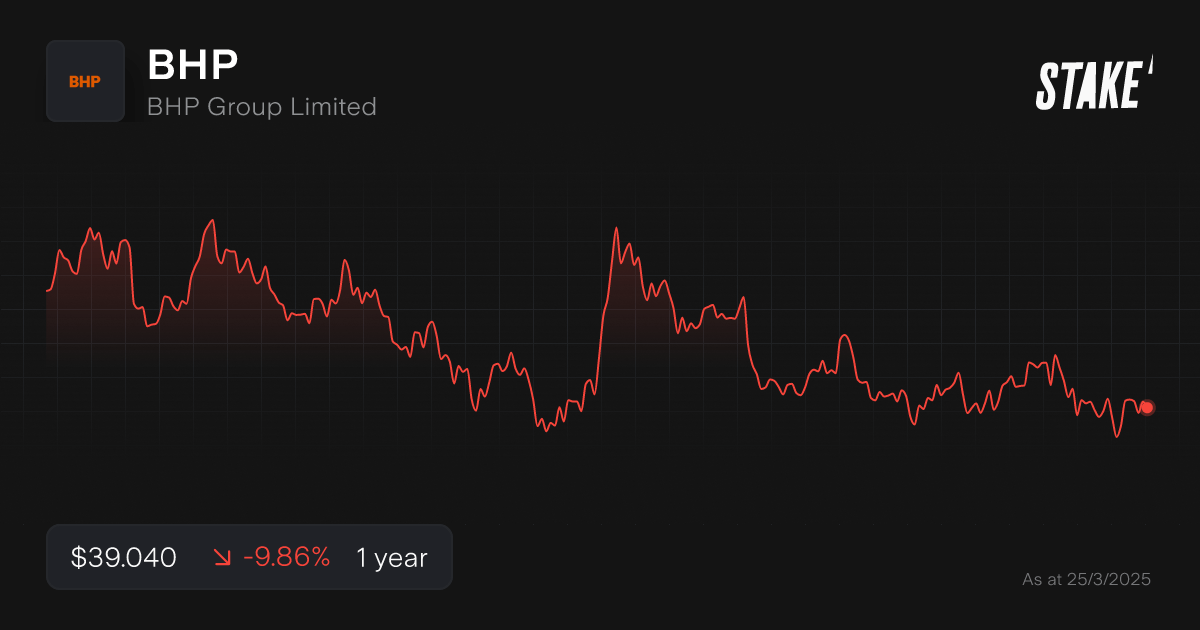
2. Rio Tinto Limited ($RIO)
As a multinational mining company founded in 1873, Rio Tinto produces iron ore from its 17 integrated mines in Western Australia. Its Pilbara Blend is the preferred ore in China. It has a rail network with over 2,000 km of tracks and four port terminals in the Pilbara region.
Rio Tinto will invest US$1.8b to develop the Brockman Syncline 1 mine project, extending the life of the Brockman region and sustaining production from its world-class iron ore operations. First ore is scheduled for 2027. The company has forecast iron ore shipments of 323m-338m tonnes in 2025.
🆚 Compare RIO vs BHP→

3. Fortescue Ltd ($FMG)
Fortescue was founded in 2003 by Andrew Forrest. Its initial mine was Cloudbreak. Its second mine, Christmas Creek, produced its first ore in 2009. The two mines form its Chichester Hub which has an annual production capacity of around 100m tonnes a year.
Its Western Hub includes the Solomon and Eliwana mines. These mines have an annual production capacity of around 100m tonnes a year. The company is targeting FY25 production of 190m-200m tonnes.
✅ HOW TO BUY: How to buy Fortescue shares in Australia
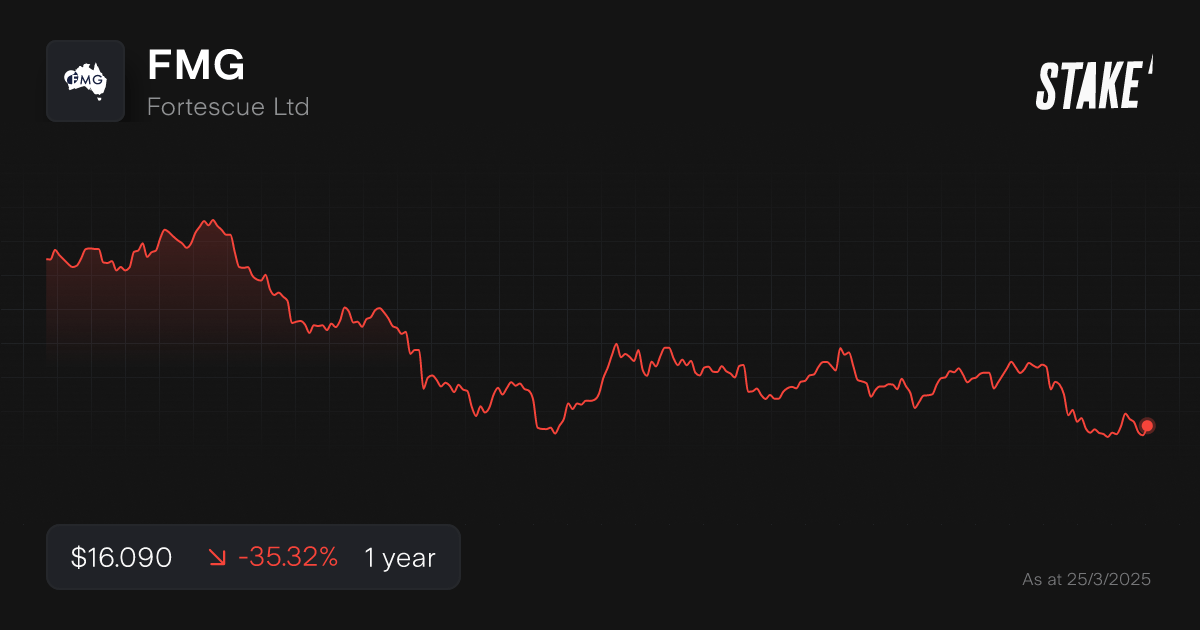
4. Mineral Resources Limited ($MIN)
Mineral Resources owns iron ore assets in three separate hubs in Western Australia, including the Yilgarn, Pilbara and Ashburton. The Yilgarn operations have been placed on care and maintenance. The company is running a process for a potential sale of its Yilgarn assets.
The Onslow Iron Project is key to driving Mineral Resources’ iron ore business. The project will ramp up to 35m a year, with an expected mine life of more than 30 years. Mineral Resources has 60% ownership and will provide the mining services and infrastructure. The firm also holds stakes in two lithium mines.
💡Related: Lithium Stocks on ASX: Top Lithium Shares to Watch→
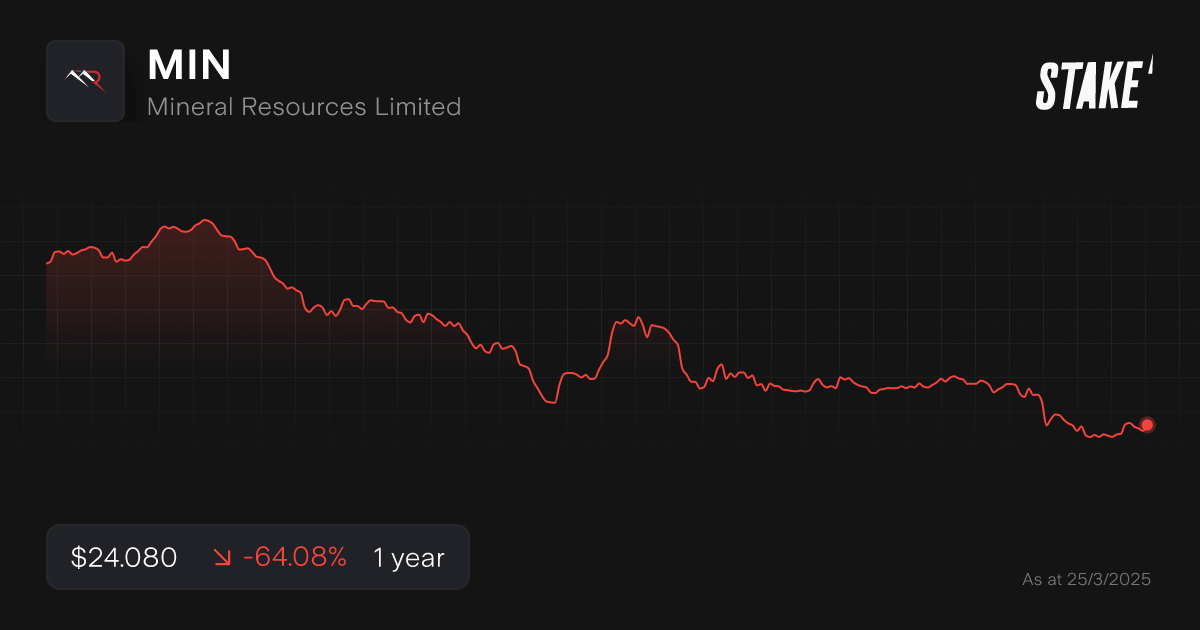
5. Champion Iron Limited ($CIA)
Champion Iron owns and operates the Bloom Lake Mine in Canada's Quebec Province. It acquired the asset in 2016 and restarted operations in 2018. Its direct reduction pellet feed project to upgrade half of Bloom Lake’s nameplate capacity from 66.2% to 69% iron content is on schedule and on budget.
The company is evaluating the Kami project which could provide 9m tonnes a year and is studying debottlenecking at Bloom Lake to lift production beyond 15m tonnes a year.
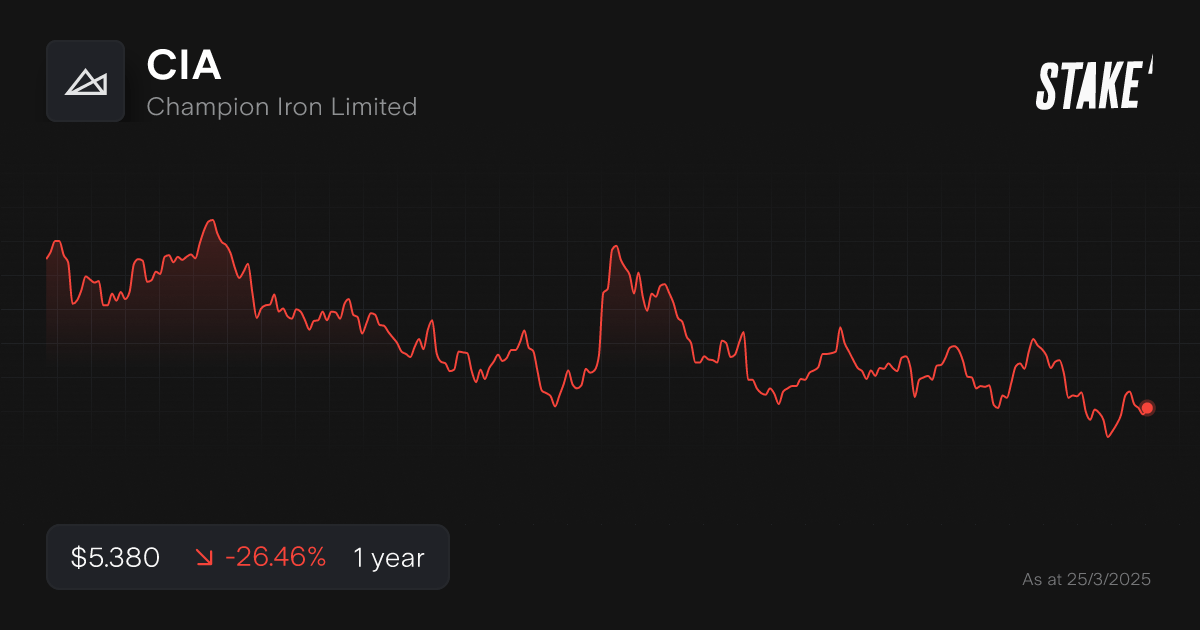
6. Deterra Royalties ($DRR)
Deterra manages a portfolio of royalty assets across a range of commodities. Its cornerstone asset is the royalty over Mining Area C, located in the Pilbara region of Western Australia. Operated by BHP, Mining Area C will be the largest iron ore hub in the world, producing 145m tonnes a year of iron ore when the South Flank expansion reaches full production.
Deterra has grown its portfolio from 6 Australian assets to 28 global assets across 11 countries and 6 commodities following the acquisition of Trident Royalties Plc in 2024.
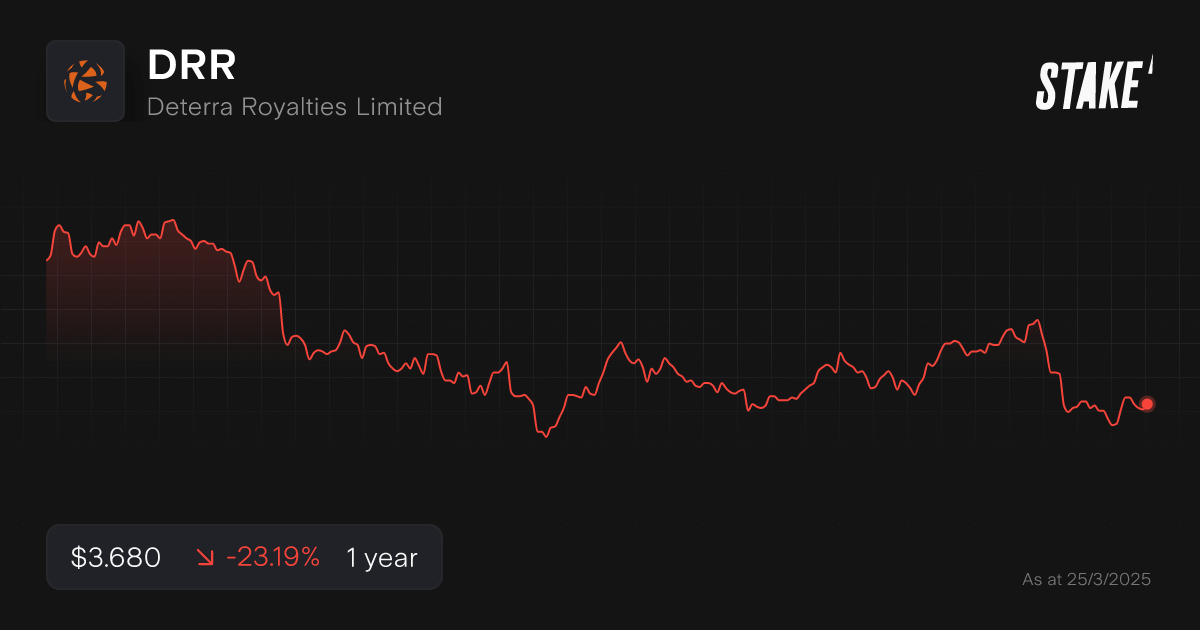
7. Mount Gibson Iron ($MGX)
Mount Gibson Iron has exported over 80 million tonnes of iron ore from its operations in Western Australia since sales began in 2004. The Koolan Island Mine is their flagship project and has average iron ore grades of 65.3%.
Significant activity undertaken at Koolan Island during the December half-year to transition operations to the eastern half of the Main Pit has positioned the company to achieve its targeted ore sales for the financial year and to progressively lift sales to maximise cashflow over the remaining two-year life of the Koolan Island operation.
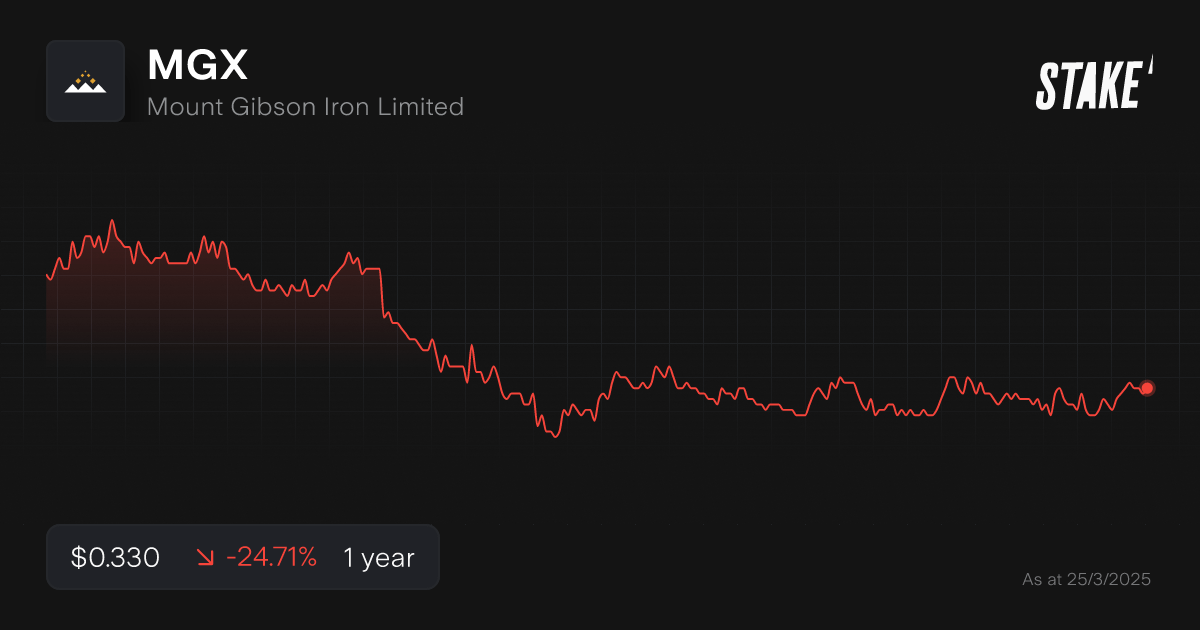
8. Grange Resources Limited ($GRR)
Grange Resources has an integrated iron ore mining and pellet production business in the north west of Tasmania. Iron ore production began in the 1960s at their Savage River Mine. Grange also owns a facility in Port Latta that transforms the iron ore into pellets. It produces over 2.2 million tonnes of high-quality iron ore products annually.
The company is undertaking studies to assess the potential to expand its Savage River operations underground, depending on financing. The North Pit underground development timeline supports execution in 2026, with first ore in late 2028 to mid-2029.
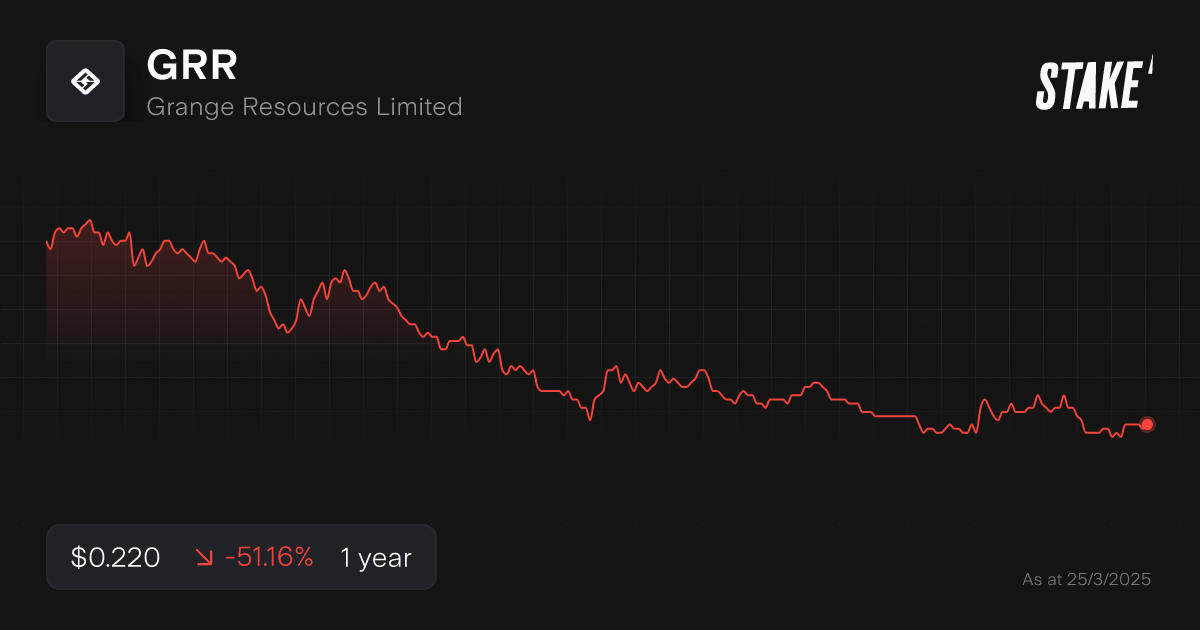
9. Fenix Resources ($FEX)
Fenix Resources commenced production at its flagship Iron Ridge project in December 2020. They use their own haulage and logistics business to transport the materials to Geraldton, where they operate their own loading and storage facilities. It is currently operating at a production run rate of 1.4m tonnes a year.
Fenix has proposed an acquisition of listed iron ore miner CZR Resources. The deal would add CZR’s Pilbara assets to Fenix’s assets in Western Australia’s Mid West region. However, the Rio Tinto-backed Robe River joint venture has made a competing offer.
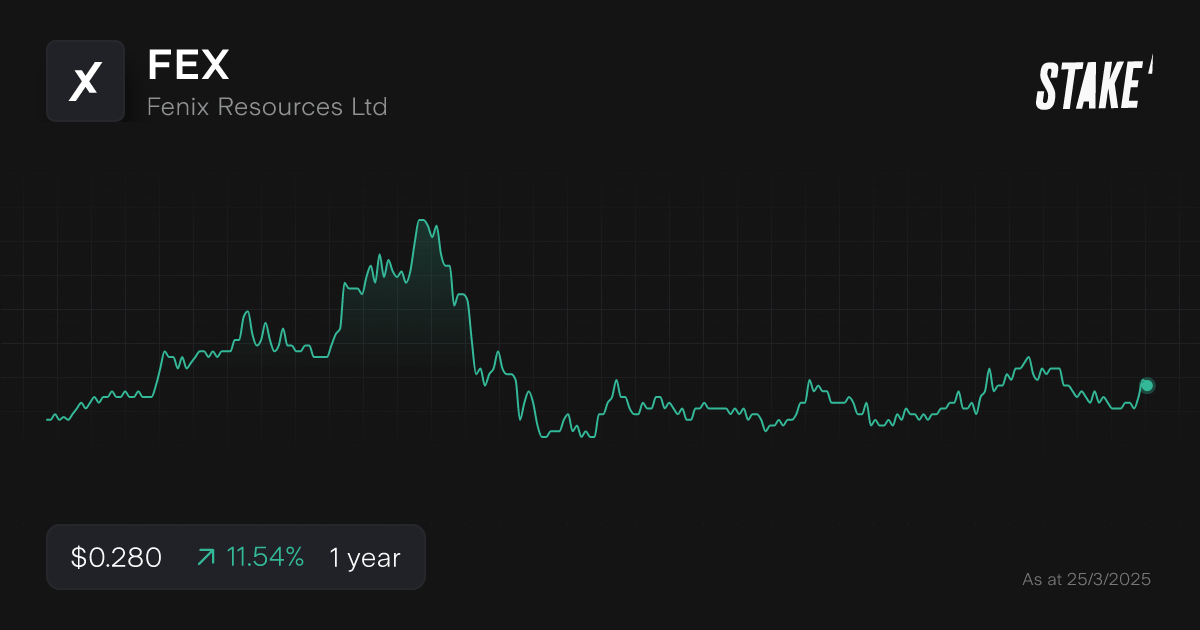
10. Magnetite Mines Limited ($MGT)
Magnetite Mines is focused on developing its flagship Razorback Iron Ore Project in South Australia. The project is capable of producing high-grade and direct-reduction grade iron ore products required in low-carbon and zero-carbon steel production.
Razorback has a mineral resource estimate of over 3b tonnes. Magnetite Mines is progressing its plans to develop a high-value, long-life operation with an initial 5m tonnes a year, expandable to 10m tonnes a year.
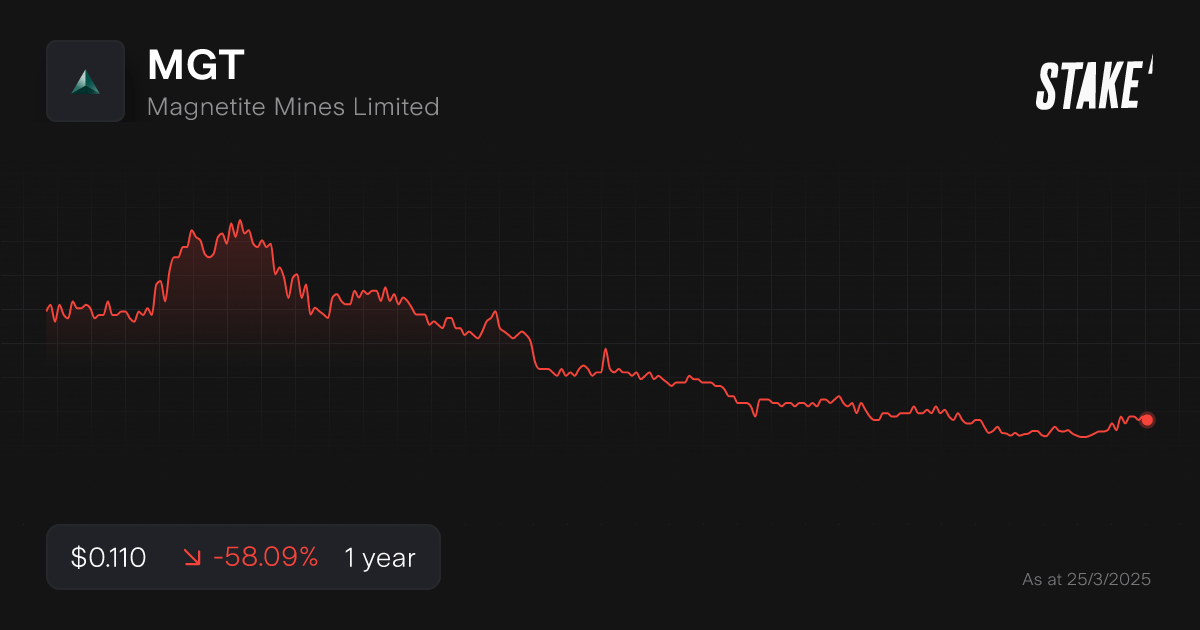
How to invest in iron ore in Australia?
The main way to invest in iron ore companies is through shares listed on the ASX, using an online investment platform. Follow our step by step guide below:
1. Find a stock investing platform
To buy iron ore shares on the ASX, you'll need to sign up to an investing platform with access to the Aussie stock market. There are several share investing platforms available, of which Stake is one.
Join 750K investors
Get a full U.S. share when you fund Stake Wall St or A$10 trading credit when you fund Stake AUS. Fund both, get both. T&Cs apply.
2. Fund your account
Open an account by completing an application with your personal and financial details. Fund your account with a bank transfer, debit card or even Apple/Google Pay.
3. Search for the company or ticker symbol
Find the company name or ticker symbol. It is advised to conduct your own research to ensure you are purchasing the right investment product for your individual circumstances.
4. Set a market or limit order and buy the shares
Buy on any trading day using a market order, or a limit order to delay your purchase of the asset until it reaches your desired price. You may wish to look into dollar cost averaging to spread out your risk, which smooths out buying at consistent intervals.
5. Monitor your investment
Once you own the stock, you should monitor its performance. Check your portfolio regularly to ensure your investment is aligning with your financial goals.
What is the future of iron ore in Australia?
Australia is the top world's producer of iron ore and the nation earned $138b from exports in 2023-2024.[1]
The value of iron ore exports is expected to decline to $108b in 2024-2025 due to lower iron ore prices amid a slump in China’s property market. Demand from the main export market China is anticipated to slow as part of the economy's longer term shift toward consumption-led growth.
Steel demand from other emerging Asian and Middle Eastern nations is likely to grow faster instead, driven by larger amounts of construction activity. One matter that investors should consider is the average grades of Australian iron ore. The steel industry is undergoing a shift to reduce the amounts of carbon emissions required in production driven by both institutional investors and government regulations.
Iron ore materials with higher grades of iron and fewer impurities require less processing, which means it can be more energy and cost-effective. The Pilbara region tends to have lower than average grades, which are not best suited to deal with emerging green steel technologies and could command lower prices over the long term.
💡Related: Nickel stocks on ASX: Top nickel mining companies→
💡Related: Top Energy stocks on ASX→
Iron ore stocks FAQs
There are two popular ETFs that investors can use to gain exposure to iron ore and the broad Australian resources sector.
- $QRE (BetaShares Australian Resources Sector ETF): This fund aims to track the performance of the Solactive Australia Resources Sector Index, providing investors with exposure to the largest ASX-listed companies in the Australian resources sector. Some of the top holdings include iron ore companies BHP, Rio and Fortescue.
- $MVR (VanEck Australian Resources ETF): The MVR ETF provides investors with exposure to a diversified portfolio of Australian companies within the resources sector. Top industries includes diversified metals and mining, gold and oil & gas exploration and production.
Iron ore's fortunes are tied to the global iron and steel industries. It's the primary raw material used in steel and needs to be combined with carbon to create the final, stronger metal. Almost all of the material ends up in steel production, which has a wide variety of end uses and overall consumption levels are linked to general conditions in the economy. It's also highly exposed to the construction industry in China.
ASX iron ore stocks could perform very differently depending on the specifics of their project or multiple assets. One big driver for the share price of producers is the iron ore price. Iron ore prices are usually benchmarked to grades of 62% and can attract a premium if above or discount when below.
During a general economic downturn, there's usually less investment in large infrastructure and construction projects. Iron ore prices can remain depressed for longer periods, and fewer new mining projects will be approved due to cost issues. There's also a risk that other countries will not have the same levels of iron ore demand in the future and a gap will be left in the market as China gradually shifts its economy to focus on services instead of heavy industry.
Pressures to reduce emissions from steel production is another major challenge for iron ore producers. Certain ASX iron ore firms could be better positioned to adapt than others. New technologies are likely to be developed and refined, while demand for specific products could outpace others.
This article was edited by Robert Guy - Senior Markets Writer at Stake.
Disclaimer
The information contained above does not constitute financial product advice nor a recommendation to invest in any of the securities listed. Past performance is not a reliable indicator of future performance. When you invest, your capital is at risk. You should consider your own investment objectives, financial situation and particular needs. The value of your investments can go down as well as up and you may receive back less than your original investment. As always, do your own research and consider seeking appropriate financial advice before investing.
Any advice provided by Stake is of general nature only and does not take into account your specific circumstances. Trading and volume data from the Stake investing platform is for reference purposes only, the investment choices of others may not be appropriate for your needs and is not a reliable indicator of performance.
$3 brokerage fee only applies to trades up to $30k in value (USD for Wall St trades and AUD for ASX trades). Please refer to hellostake.com/pricing for other fees that are applicable.

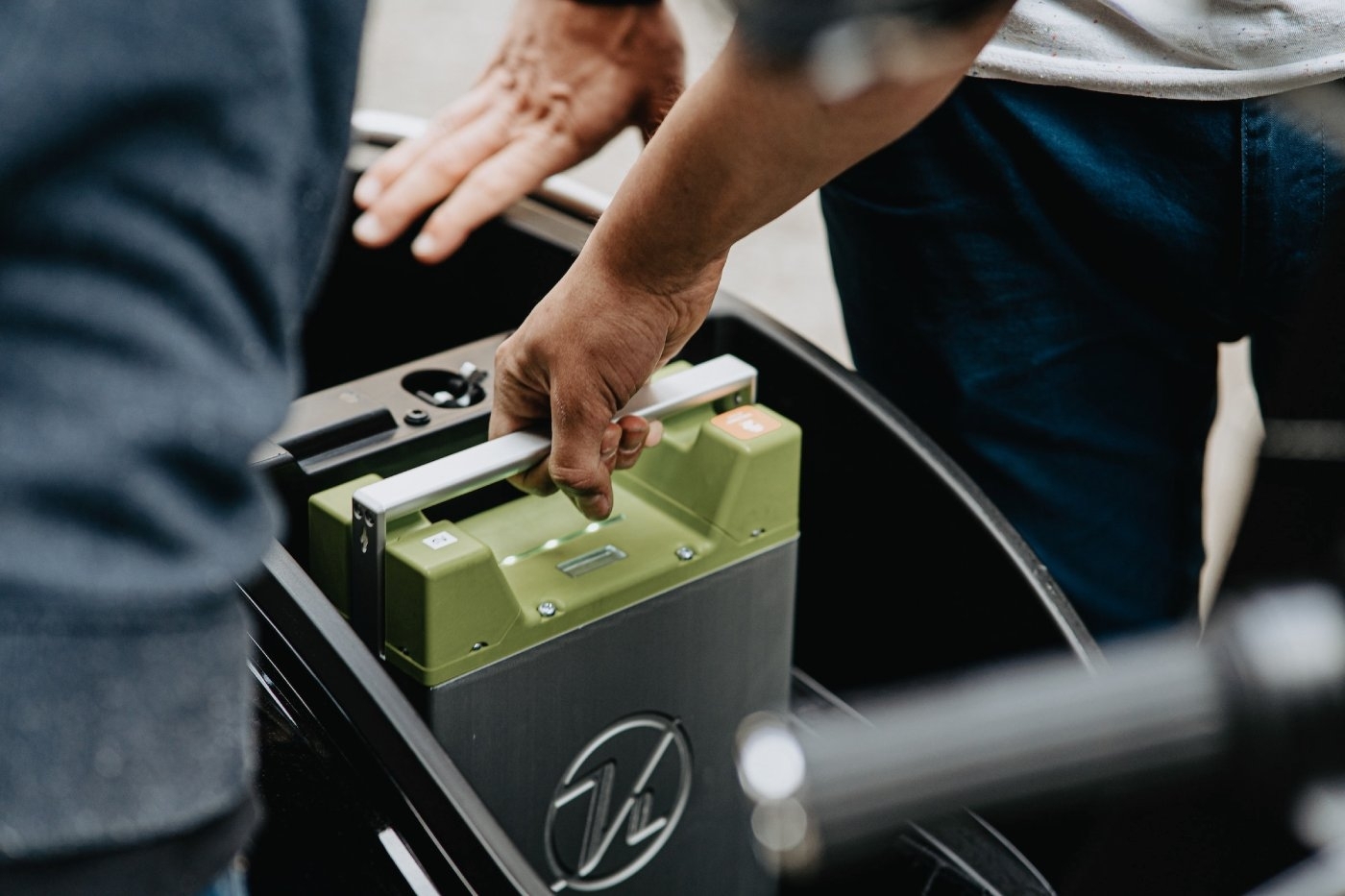
.jpg&w=3840&q=100)